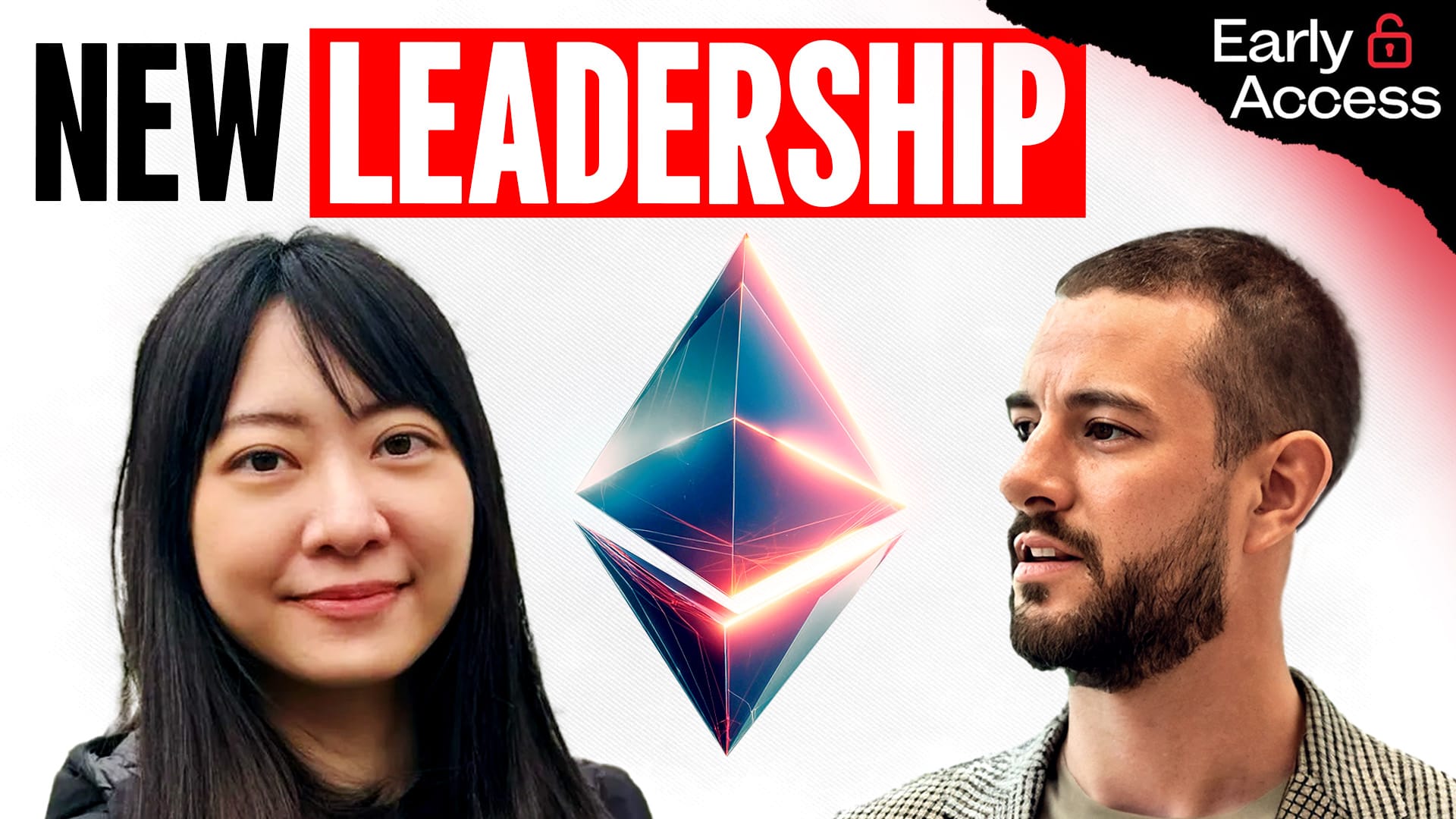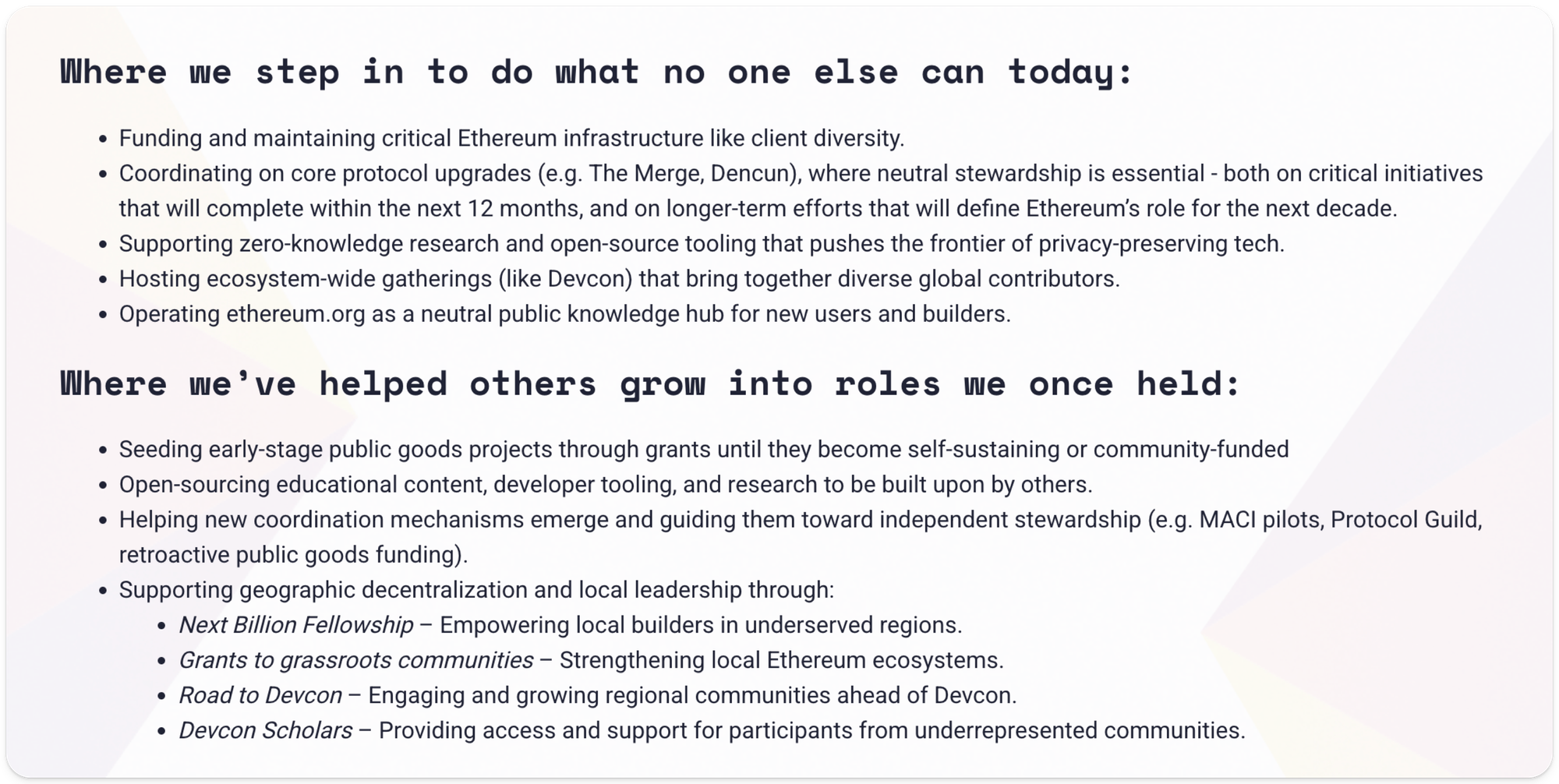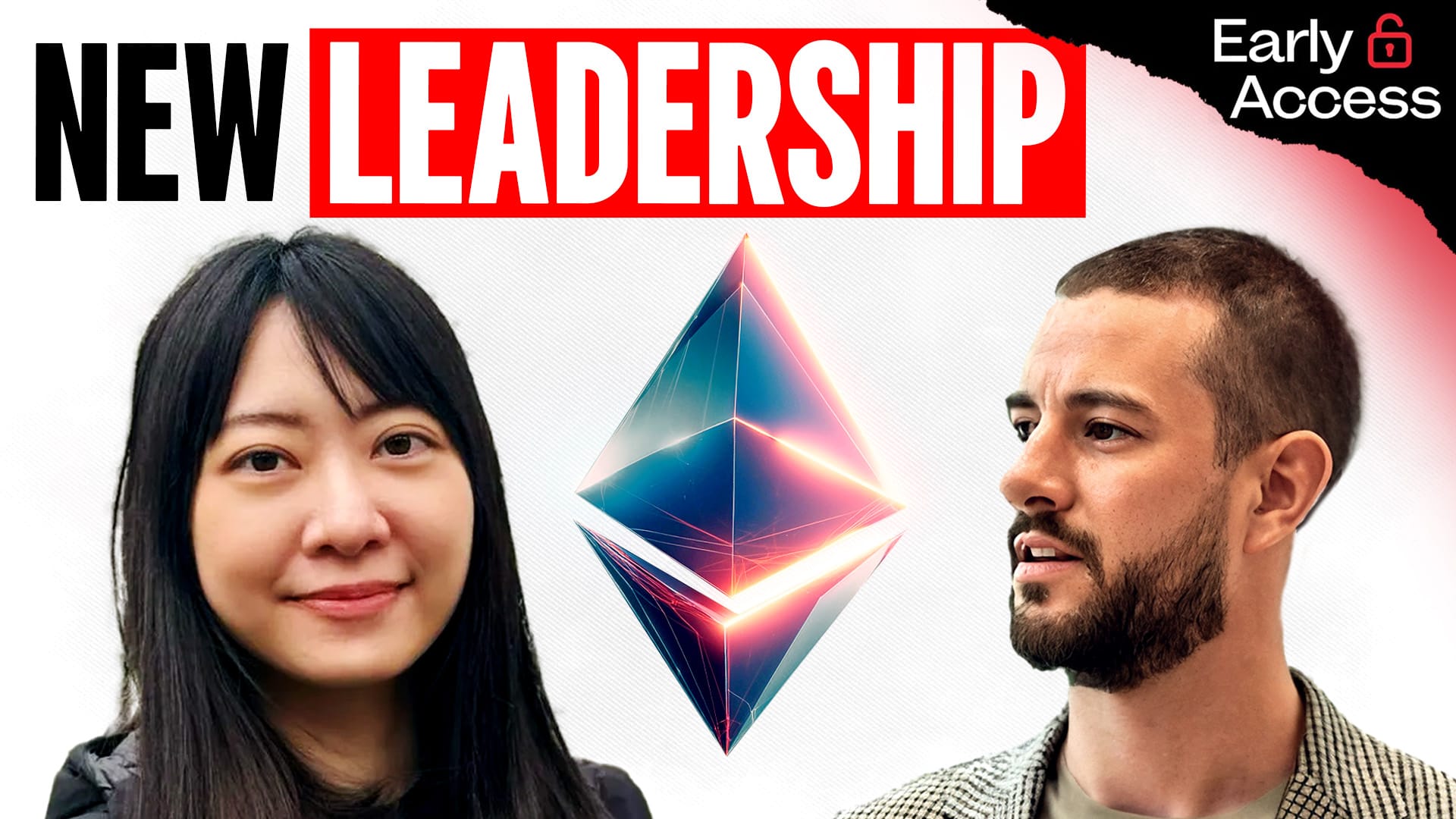The Ethereum Foundation’s New Exec Directors Talk Vision and Action

The Ethereum Foundation's newly appointed co-executive directors have their action plans for revitalizing the network.
On Monday, the Ethereum Foundation (EF) released new updates detailing a refreshed organizational structure and execution plan designed to accelerate Ethereum's development. These announcements come during a period of renewed urgency within the Ethereum ecosystem, as the community responds to competitive pressures from rival Layer 1s, EF leadership changes, and critiques around the relationship between the base layer and its Layer 2 ecosystem.
Following the release of these articles, Ryan and David sat down with the new EF co-executive directors, Hsiao-Wei Wang and Tomasz Stanczak, to go into more detail about their plans to usher Ethereum into its next chapter.
Citizens can listen to the full interview now in Early Access.

Let’s dive into what they had to say. First, though, we have quick summaries of the three articles below. 👇
1️⃣ The Ethereum Foundation's Vision
The headlining article in this series comes from EF President Aya Miyaguchi and founder Vitalik Buterin and articulates the Foundation’s vision for the network (as an open, permissionless platform empowering millions) and the role it intends to continue to play stewarding its resilient ecosystem of projects and communities.
1/ Today, we’re excited to share three updates from the EF board and management team.
— Ethereum Foundation (@ethereumfndn) April 28, 2025
Its role involves filling critical gaps (i.e., funding infrastructure, coordinating upgrades like The Merge) while empowering others through grants and open-source tools.

The Foundation, they state, turns on upholding the network’s principles like long-term thinking, censorship resistance, privacy, and decentralization to help the community sustain Ethereum, rather than just having that be the role of the Foundation. In conclusion, the article succinctly defines the EF’s goals to be two-fold:
- "Maximize the number of people who (directly or indirectly) use Ethereum, in such a way that they benefit from Ethereum’s underlying values."
- What this looks like: Internet-native finance (e.g., DeFi), DAOs, decentralized social media, AI coordination, and auditable enterprise apps.
- What this is not: Custodial wallets or companies “cosmetically” storing things onchain without providing their users real benefits.
- "Maximize the resilience of Ethereum's technical and social infrastructure."
- What this looks like: Independent ecosystem, diverse teams, robust network, and proactive risk management.
- What this is not: Teams dependent on EF funding or performative diversity masking vulnerabilities.
2️⃣ The Next Chapter
Building on the EF's vision, "The Ethereum Foundation's Next Chapter" outlines how co-executive directors Hsiao-Wei and Tomasz will execute plans to accelerate Ethereum's growth.
Guided by censorship resistance, open source, privacy, and security, the EF sets three objectives for the next 12 months:
- Scaling Ethereum mainnet: Increase Layer 1 speed and throughput.
- Scaling blobs: Expand block space to support Layer 2 (L2) chain growth.
- Improving user experience: Enhance L2 interoperability and developer support.
Tomasz emphasizes faster execution and communication, while Hsiao-Wei emphasizes strengthening EF operations to enhance ecosystem support for both builders and users.
Our discussions about the Layer 1 scaling roadmap have been extensive, and the feedback so far suggests that the community appreciates our ambition. Turning that ambition into reality now depends on the focus of the core development teams and researchers.
— Tomasz K. Stańczak (@tkstanczak) April 20, 2025
Following the recent…
3️⃣ The Management and Board Structure
The third article details the Ethereum Foundation's management and board structure, enabling the vision and execution from the prior articles. The management team, led by Wang and Stanczak, drives strategic and operational efforts, while the board sets the vision and ensures alignment with EF values. This structure aims to support the vision's goals (first article) and execute its priorities (second article).
- Management Team:
- Hsiao-Wei Wang: Co-Executive Director.
- Tomasz Stanczak: Co-Executive Director (two-year term).
- Bastian Aue: Strategy, hiring, training.
- Josh Stark: Project execution, communications.
- Board of Directors:
- Vitalik Buterin: Technical guidance.
- Aya Miyaguchi: President, external relationships.
- Patrick Storchenegger: Legal and compliance.
- Hsiao-Wei Wang: Bridges board and management.
Some updates from the EF!
— hww.eth | Hsiao-Wei Wang (@hwwonx) April 28, 2025
Quoting the last section here, but please read all three blog posts if you have time. :)
Ethereum is not a monolith. It is a living, breathing network of communities, builders, researchers, artists, educators, and dreamers. It is global, diverse, and… https://t.co/pWLBZnzcvA
⭐️ The New Leadership and Their Action Plan
In their conversation with Bankless, Wang and Stanczak unpacked the EF's newly released strategic updates, providing crucial context beyond what appeared in the official documents.
First, they gave more color on their backgrounds:
- Hsiao-Wei Wang: Joined the EF in 2017 as a core protocol researcher, worked extensively on The Merge before joining leadership in Dec. 2023.
- Tomasz Stanczak: Discovered Ethereum in 2015-2016 while working at Citibank, going on to found Nethermind, the company behind one of Ethereum’s top execution clients for running nodes, in 2017.
Between the two of them, they bring a combination of deep EF experience and research expertise as well as sharp operational and infrastructure knowledge.
Wang aims to steward Ethereum's core principles and values, while Stanczak takes ownership of operational improvements to promote faster execution. Stanczak cited his own extensive outreach in recent months (over 200 conversations with community members) that have provided real-world feedback to shape their strategies.
Together, the duo is aiming to operationalize the Foundation's strategic vision while addressing longstanding community frustrations. This balanced team structure tackles three specific pain points that Ethereum users have highlighted: development slowdowns, unclear communication about roadmap progress, and the perception that the EF operates too far removed from everyday users and applications.
From Roadmap to Reality
The interview went into detail on how they plan to execute the three objectives outlined in "The Next Chapter" with an accelerated hard fork schedule:
- Pectra (May 2025): Includes staking changes and user experience improvements, including account abstraction via EIP-7702
- Fusaka (September-October 2025): Focused on scaling and further UX enhancements, with devnet launching immediately after Pectra
- Glamsterdam (June 2026): Delivers significant Layer 1 scaling (3x-10x) along with additional protocol improvements
Ethereum's execution layer scaling roadmap is on track:
— Toni Wahrstätter ⟠ (@nero_eth) April 28, 2025
- Continuous Gas Limit Increases (EIP-7935)
- History Expiry (EIP-4444)
- Delayed Execution (EIP-7886)
- Block Access Lists (EIP-7928)
- Block-Level Warming (EIP-7863)
Here's a short thread with additional context👇
This six-month fork cadence accelerates the historical 12-18 month timeline between upgrades, supporting three key goals:
- Transaction Speed: Making Ethereum 3x faster by 2025, 10x faster by 2026, and 100x faster over four years
- Technical Approach: Testing client readiness, adding targeted improvements, and speeding up zero-knowledge tech development
- Measuring Success: Using dashboards to track progress and connect research work to real-world results
To achieve these goals, the co-directors are implementing significant operational reforms, including giving 40+ team leads more decision-making authority, reshaping developer calls to focus on product delivery, and bringing app developers into discussions early to ensure practical solutions.
Checkpoint #2 is live! Accessible updates of the last 4-5 All Core Dev calls. Pectra is live on mainnet in ~a week, are you caught up on ACD?
— nixo.eth 🦇🔊🥐 (@nixorokish) April 29, 2025
→ Successful Hoodi upgrade
→ Wen history expiry?
→ Fusaka scope
→ EOF removed
→ New ACD call structure post-Pectra
↓ Link below pic.twitter.com/y3CkVVZYjH
Balancing Speed with Principles
A central theme of the interview was how the EF will maintain Ethereum's core values while dramatically accelerating development, with Wang emphasizing that her role includes ensuring fast decisions remain value-aligned, while Stanczak pushes for increased speed and action.
The discussion clarified the EF's actual role in the ecosystem:
- What the EF Does: Coordinates protocol research, funds grants, organizes developer events, and maintains one execution client (Geth)
- What the EF Doesn't Do: Own Ethereum, develop consensus clients, conduct extensive business development, or perform traditional marketing
This evolving approach demonstrates how the Foundation is implementing its new strategic vision:
- Temporary Gap-Filling: The EF prioritizes critical tasks internally but aims to enable other organizations to eventually take over
- Active Ecosystem Building: Shifting from grants-only to connecting founders with resources, talent, and partners
- Balanced Execution: Combining Wang's focus on principled decisions with Stanczak's drive for operational improvement
The Ethereum Foundation's strategic refresh, detailed in these announcements and our conversation with the co-executive directors, signals a desire to revitalize Ethereum's approach to growth and development.
The Foundation's unique new structure aims to pair Wang's protocol expertise with Stanczak's operational discipline — a deliberate combination designed to address Ethereum's key challenges. Meanwhile, their accelerated roadmap (Pectra, Fusaka, and Glamsterdam) creates a six-month upgrade cycle, significantly outpacing Ethereum's historical timeline.
Most importantly, these leaders set clear scaling targets (3x by 2025, 10x by 2026, 100x over four years) backed by concrete operational reforms: empowered team leads, restructured developer calls, and application builders in early planning stages.
Overall, Wang and Stanczak have their work cut out for them with a community demanding fast action, but the pair clearly have respect for the challenges ahead and have defined a path forward for the network to realize some of its biggest opportunities.
To hear the full conversation about Wang and Stanczak's plan, make sure to check out our full episode, available now in Early Access for Citizens.


